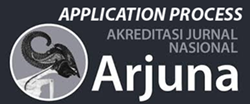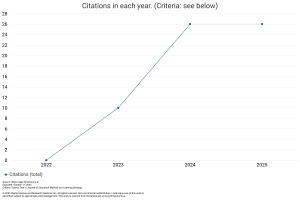Impact of Student-Student Interaction Learning Model Faced with Case of Studying IPA on V-Class in the MIS Hayatul Islam Cinangka
DOI:
https://doi.org/10.59653/jemls.v2i01.534Keywords:
Student-student Interaction, Cooperative Learning type STAD, IPA learning resultsAbstract
of the constraints affecting the learning outcomes of the IPA in students is the lack of variation of the learning model used, then students end up feeling bored and unenthusiastic so that their learning results are interrupted. The study aims to investigate the influence of the Student-Student Interaction (SSI) learning model on the learning outcomes of V-grade students on the IPA students' eyes, using the comparison of the STAD cooperative learning model. (Student Team Achievement Divisions). This research uses a quantitative approach to experimental design with a quasi-experimental design. The study was conducted with a sample of 61 students divided into two, namely 31 experimental classes using the Student-Student Interaction learning model and 30 control class using the STAD learning model (Studant Team Achievement Divisions) in the academic year 2019/2020 at MIS Hayatul Islamiyah. Based on the results of the study using the hypothesis test and nonparametric test Mann Whitney with a 95% confidence rate showed a Sig. (2-tailed) value of 0.044 which means 0.044 < 0.05 so it can be concluded that there is a significant difference to the learning outcome of IPA class V between classes using the learning model SSI (Student-student Interaction) and class using the cooperative learning model STAD type (Student Teams Achievement Divisions).
Downloads
References
Abidin, Y. (.-2. (2014). Desain Sistem Pembelajaran Dalam Konteks Kurikulum 2013. Bandung: Refika Aditama, h. 241-242.
Aningrum Shinta Hapsari, et al,. (2019). “Motion graphic animation videos to improve the learning outcomes of elementary school students”. European Journal of Educational Research,, 8(4), 1245- 1255,.
Arends, I. R. (2008). Belajar untuk mengajar: Learning to teach. Yogyakarta: Pustaka Pelajar, h. 46.
Barton et al, K. C. (2004). “Reflecting On Elementary Children’s Understanding Of History And Social Studies An Inquiry Project With Beginning Teachers”. Journal of Teacher Education,, 55(1).
Bsnp, T. P. (2010). Paradigma pendidikan nasional abad XXI. Jakarta: Badan Standar Nasional Pendidikan.
Chiu, M. M. (2008). “Flowing toward correct contributions during groups mathematics problem solving: A statistical discourse analysis”. Journal of the Learning Sciences,, 17(3), 415-631,.
Creswell, J. W. (2012). Educational research: Planning, conducting, and evaluating quantitative and qualitative research. Boston.: Pearson Education, h. 287.
Dimyati et al, &. M. (2015). Belajar dan Pembelajaran. Jakarta: PT. Rineka Cipta, 2015), h. 238.
Hamalik, O. (2013). Dasar-Dasar Pengembangan Kurikulum,. Bandung.: PT. Remaja Rosdakarya.
Hermawan et al, M. C. (2020). STAD type Cooperative Learning Model: An Action In Learning Mathematics. . International Journal Of Scientific & Technology Research., Vol. 9, Issue 04.
Jolliffe, W. (2007). Cooperative Learning in the Classroom Putting it into Practice. New York.: Paul Chapman Publishing, h. 3.
Kadir, S. T.-1. (2005). (Konsep Contoh dan Analisis Data dengan Program SPSS Lisrel dalam Penelitian). Jakarta: PT. Raja Grafindu, h. 489.
Mahdiyah, S. P. (2014). Statistik Pendidikan. Bandung.: PT. Remaja Rosdakarya, h. 104.
Margono. (2010). Metodelogi Penelitian Pendidikan. Jakarta.: Rineka Cipta, h. 118.
Martin et al, G. J. (2016). Powerful Strategies for Student Centered Learning,. Switzerland: SpringerBriefs in Education, h. 11.
Piet. A. Sahartian. (2000). Konsep Dasar dan Tehnik Supervisi Pendidikan. Jakarta.: Rineka Cipta.
Rosfiani et al, O. M. (2019). Assessing social studies learning: effects of learning environment, inquiry, and student learning interest. Dalam TARBIYA:. Journal of Education in Muslim Society,, 6(1), 45-56.
Rukhiyat, A. d. (2003). Panduan Penelitian Bagi Remaja. Jakarta: Dinas Olahraga Dan Pemuda, h. 48.
Sudarsana, I. K. (2018). “Pengaruh Model Pembelajaran Kooperatif Terhadap Peningkatan Mutu Hasil Belajar Siswa”. Jurnal Penjaminan Mutu, Vol. 4.
Sudjana. (2006). Metoda Statistika. Bandung: PT. Tarsito Bandung, h. 246.
Sudjana, (. P. (2006). Metode Statistika. Bandung.: PT. Tarsito Bandung, h. 8.
Sugiyono. (2015). Metode Penelitian Pendidikan. Bandung: Alfabeta, h .107.
Suprijono, A. (2009). Cooperative Learning Teori dan Aplikasi Paikem. (Yogyakarta:: Pustaka Pelajar, 2009) h. 5.
Surayya et al, A. I. (2014,). “Pengaruh Model Pembelajaran Think Pair Share Terhadap Hasil Belajar IPA Ditinjau dari Keterampilan Berpikir Kritis Siswa”,. E-Journal Program Pascasarjana Universitas Pendidikan Ganesha,, vol.4.
Syah, M. (2013). Psikologi Belajar. Jakarta: Raja Grafindo Persada, h. 156.
Trianto. (2011). Model Pembelajaran Terpadu: Konsep dan implementasinya dalam KTSP,. Jakarta.: Bumi Aksara, h. 74.
Xiaojin Kang & Jing Han. (2019.). “Improving teaching style with dialogic classroom teaching reform in a chinese high school”. World Journal of Education., 9(2).
Downloads
Published
How to Cite
Issue
Section
License
Copyright (c) 2023 Cecep Maman Hermawan, Okta Rosfiani, Narulita Kinandhani Haidir, Suci Syakila Aulia, Putra Putra, M. Ravito Atmajaya Aprilliano

This work is licensed under a Creative Commons Attribution-ShareAlike 4.0 International License.
Authors who publish with this journal agree to the following terms:
- Authors retain copyright and grant the journal right of first publication with the work simultaneously licensed under a Creative Commons Attribution-ShareAlike that allows others to share the work with an acknowledgement of the work's authorship and initial publication in this journal.
- Authors are able to enter into separate, additional contractual arrangements for the non-exclusive distribution of the journal's published version of the work (e.g., post it to an institutional repository or publish it in a book), with an acknowledgement of its initial publication in this journal.
- Authors are permitted and encouraged to post their work online (e.g., in institutional repositories or on their website) prior to and during the submission process, as it can lead to productive exchanges, as well as earlier and greater citation of published work (See The Effect of Open Access).
























